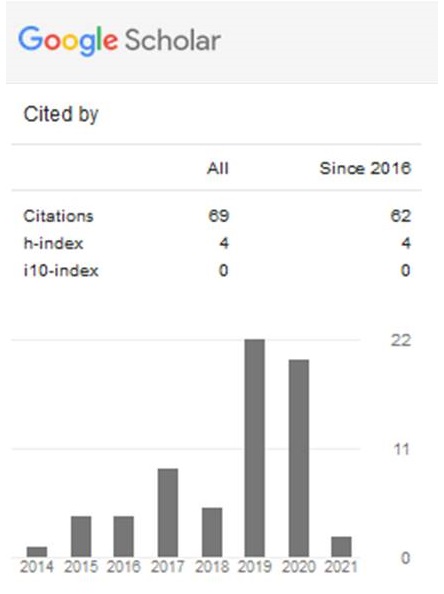Aplikasi Kompos Tkks Dan Pupuk P Terhadap Pertumbuhan Dan Hasil Tanaman Kacang Hijau (Vigna radiata. L)
Abstract
Keywords
Full Text:
PDF (Bahasa Indonesia)References
Cahyono, B. 2010. Kacang Hijau (Teknik Budidaya dan Analisis Usaha Tani). CV. Aneka Ilmu. Semarang.
Darnoko dan S. S. Ady. 2006. Pabrik Kompos di Pabrik Sawit. Tabloid Sinar Tani, 9 Agustus 2006.
Dirjen Tanaman Pangan. 2020. Laporan Tahunan Direktorat Jenderal Tanaman Pangan Tahun 2019. Dirjen Tanaman Pangan, Kementrian Pertanian. Jakarta.
Fageria, N. K., V. C. Baligar dan C. A. Jones. 1997. Growth and Mineral Nutrition of Field Crop. Mareel Dekker. Inc. Amerika Serikat.
Goldsworthy, P.R., dan N.M Fisher. 2002. The Physiology Of Tropical Field Crops (Fisiologi Tanaman Budidaya Tropik, Terjemahan Tohari). Gadjah Mada University Press. Yogyakarta.
Hanum, C. 2009. Ekologi Tanaman. Universitas Sumatera Utara Press. Medan.
Hardjowigeno, S. 2004. Ilmu Tanah. Akademika Presindo. Jakarta.
Indriani, Y.H. 2007. Membuat Kompos Secara Kilat. Penebar Swadaya. Jakarta.
Lakitan, B. 2012. Dasar-Dasar Fisiologi Tumbuhan. Raja Grafindo Persada. Jakarta.
Lingga, P. 2002. Pupuk dan Pemupukan. Penebar Swadaya. Jakarta.
Lingga, P. dan Marsono. 2003. Petunjuk Penggunaan Pupuk. Penebar Swadaya. Jakarta.
Marschner, P. 2012. Mineral Nutrition of Higher Plants. London.
Munawar.A, 2011. Kesuburan Tanah dan Nutrisi Tanaman. IPB Press. Penebar Swadaya. Jakarta.
Murbandono, L. 2005. Pupuk Organik. Agromedia Pustaka. Jakarta.
Novizan. 2005. Petunjuk Pemupukan yang Efektif. Agromedia Pustaka. Jakarta.
Pusat Penelitian Kelapa Sawit (PPKS). 2008. Aplikasi Kompos TKKS pada Kelapa Sawit TM. Medan.
Rina, D. 2015. Manfaat unsur N, P, dan K bagi tanaman. BPTP Kalimantan. p.14.
Rosmarkam, A. dan N. W. Yuwono. 2005. Ilmu Kesuburan Tanah. Kanisius. Yogyakarta.
Singh, R., S. Chaurasia., A. D. Gupta., Mishra and P. Soni. 2014. Comparative Study of Transpiration Rate in Mangifera indica and Psidium guajawa Affect by Lantana camara Aqueous Extract. Journal of Environmental Science, Computer Science and Engineering & Technology. 3 (3): 1228-1234.
Sitompul,S. M. Dan Guritno, B. 1995. Analisis Pertumbuhan Tanaman. UGM Press. Yogyakarta.
Sutedjo, M. M. 2010. Pupuk dan Cara Pemupukan. Rineka Cipta. Jakarta.
Wahyunto, S. Ritung, and H. Subagjo. 2003. Map of Peatland Distribution Area and Carbon Content in Sumatra. Wetland International-Indonesia Program and Wildlife Habitat Canada (WHC).
Winarso, S. 2005. Kesuburan Tanah, Dasar Kesehatan dan Kualitas Tanah. Gava Media. Yogyakarta. 350 hal.
Refbacks
- There are currently no refbacks.

_2017.jpg)



